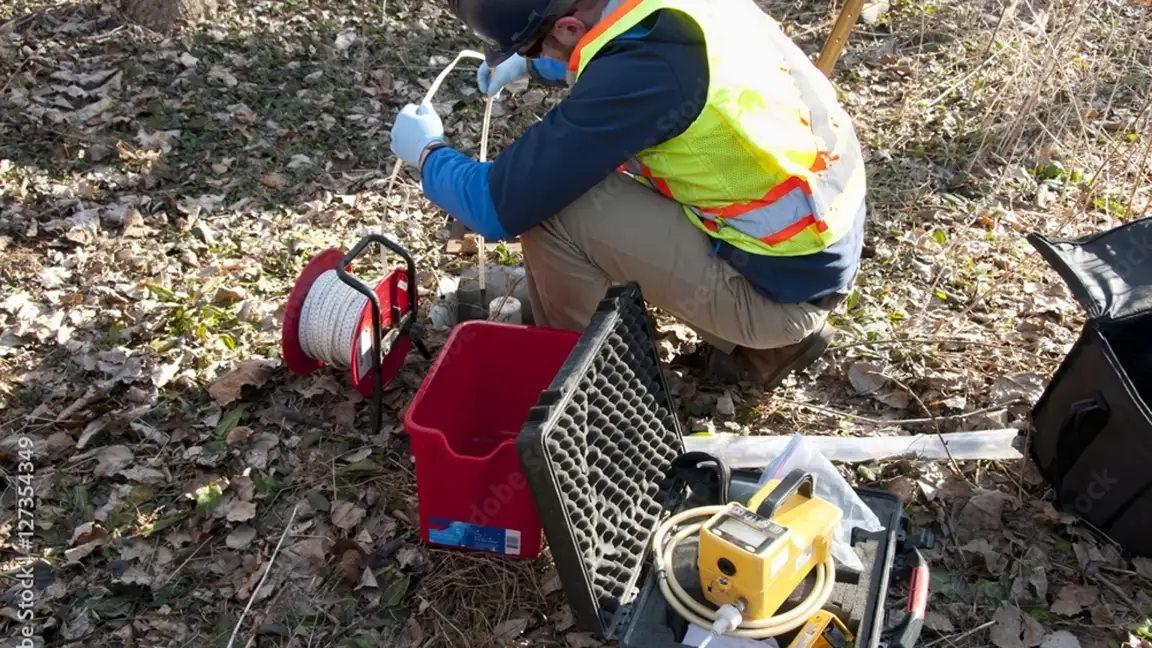Introduction
As groundwater becomes an increasingly precious and regulated resource, especially in regions like California’s Central Valley, accurate monitoring of groundwater extraction is critical. The Sustainable Groundwater Management Act (SGMA) has intensified the need for reliable tracking methods to ensure responsible water use. Two main approaches have emerged in response: direct metering of wells and satellite-based monitoring through evapotranspiration (ET) data.
Groundwater Metering: A Direct Monitoring Tool
Groundwater metering relies on flow meters installed on wells to measure the exact volume of water extracted. This method provides highly accurate, real-time data that can be automatically transmitted to groundwater management agencies. It allows for precise tracking, supports water billing systems, and enhances regulatory enforcement.
Despite these advantages, metering involves substantial upfront costs for installation and maintenance. It also requires landowner cooperation and may be perceived as intrusive. Still, in high-risk areas with severe overdrafts or where accurate data is crucial, metering remains a trusted and effective tool.
Evapotranspiration Data: A Remote Sensing Alternative
Evapotranspiration refers to the movement of water from soil and vegetation into the atmosphere. Satellite technologies can estimate this process across large landscapes, providing a broader view of water use. By subtracting precipitation and applied surface water, agencies can estimate groundwater usage from ET data, making it a valuable tool for monitoring agricultural activity on groundwater-dependent lands.
This approach is more affordable and scalable than installing meters on every well. However, since it relies on indirect measurement and modeling, ET data may not be as precise as direct metering. It’s best suited for regional planning, trend analysis, and areas where infrastructure is limited or rapid implementation is needed.
Accuracy and Applicability
The choice between metering and ET data often depends on the specific goals of the monitoring program. Metering is ideal when exact, enforceable data is needed, especially for high-volume users or billing systems. In contrast, ET data provides a cost-effective way to monitor trends over time and across wide areas.
For example, when an agency needs to enforce pumping limits, meters provide the level of precision required. On the other hand, when the goal is to evaluate overall groundwater consumption patterns, ET data is often sufficient and more manageable.
Hybrid Systems: The Best of Both Worlds
Many groundwater agencies are combining both approaches to create robust monitoring systems. This hybrid strategy enables cross-checking of data, increasing the reliability of reported usage. ET data may highlight unexpected usage patterns, prompting follow-up inspections or targeted metering installations.
Such a layered approach builds trust among stakeholders, improves the integrity of groundwater accounting, and supports adaptive management strategies.
Cost and Implementation Considerations
Budget constraints play a key role in determining monitoring strategies. Metering each well can be expensive and labor-intensive, particularly in areas with thousands of small-scale groundwater users. In contrast, satellite data can be implemented more rapidly and at a fraction of the cost.
However, using ET data effectively requires technical expertise. Agencies may need to invest in data analysts, software tools, and partnerships with satellite data providers to make full use of this technology.
Policy Alignment and Compliance
Both methods contribute to meeting SGMA requirements and broader water sustainability goals. Metering supports strict enforcement, fee calculation, and penalties, while ET data informs planning and allocation decisions. Groundwater sustainability agencies often use both tools together to strike a balance between precision and flexibility.
Policies that incorporate both technologies tend to be more resilient, adaptable, and effective over the long term.
Conclusion
Accurate groundwater monitoring is essential for sustainable water management. Whether through direct metering or satellite-based evapotranspiration data, the choice of method should reflect the region’s regulatory goals, infrastructure capabilities, and financial resources. A combined strategy allows agencies to enhance transparency, ensure fairness, and support long-term sustainability in groundwater use.
